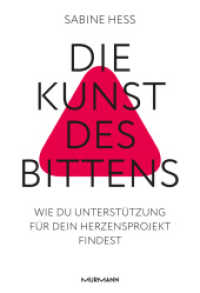- ホーム
- > 洋書
- > 英文書
- > History / World
Full Description
For one semester/quarter undergraduate courses in the History of Modern East Asia or Modern East Asian Civilizations.In East Asia: Identities and Change in the Modern World, accomplished historian R. Keith Schoppa uses the prism of cultural identities to examine the four countries that make up the East Asian cultural sphere-China, Japan, Korea, and Vietnam-from roughly 1700 to the present. This text explores modern East Asian history through the themes of identities and change.What your colleagues are saying about East Asia: Identities and Change in the Modern World: "I am quite impressed by East Asia: Identities and Change in the Modern World. For the majority of professors Schoppa's text will become and instant classic. It is a major improvement on what is available. I really like the author's ability to examine diverse identities and to confront our simplistic views of Asia." - David Atwill, Pennsylvania State University"East Asia: Identities and Change in the Modern World is impressive, a great contribution to the field. It tells the story of East Asia since the seventeenth century in a lucid way that takes into account both traditional interpretations and modern scholarship. One of the strengths of the text is its willingness to take strong interpretive stands, even as it attempts a balanced portrayal. Another strength is the inclusion of Vietnam and Taiwan, regions ignored by many survey texts." - James L. Huffman, Wittenberg University "I think East Asia: Identities and Change in the Modern World is terrific, comprehensive, accessible, and with a comfortable style for undergaduates. The focus on identities is very smart." - Sue Gronewold, Kean University
Contents
Chapter One Basic Identities The Chasm between the Cultures of Traditional East Asia and the Modern WorldSenses of Time and SpaceBasic Social UnitSocial HierarchySocial Goals and PatternsState and GovernmentWays of Thinking about Life and the WorldRice Culture: The World of East Asian AgricultureThree Ways of Thought in Traditional East AsiaConfucianismDaoismBuddhismChapter Two From Multicultural Empire to Semicolony: The Qing Dynasty, 1750-1870 The ManchusBuying into Chinese Culture The Civil Service ExaminationRituals, Religion, and ValuesDealing with the OtherIdentity and Change: The Qianlong EmperorIdentity CrisisEmerging ProblemsThe Early Western RoleChina and the West: Mutual PerceptionsEarly-Nineteenth-Century Political and Social InstabilityThe Opium Tragedy and War The Unequal Treaty System Foreign ConcessionsExtraterritoriality with Consular JurisdictionForeign Ambassadorial ResidenceThe Missionary and Cultural ImperialismChapter Three Rebellion and War: The Qing State in Decline, 1850-1901 The Taiping Rebellion (1851-1864): Attempts to Revolutionize Identity The Taiping RevolutionWhy the Revolution FailedGuerrilla Warfare: The Nian Rebellion (1853-1868)Muslims versus Chinese: Clashes in Ethnic IdentitySelf-StrengtheningRussia in ChinaImperialism and China's Tributary StatesLoss of the Liuqin (Ry u-kyu-) IslandsVietnam and French ColonialismStruggling for KoreaThe Sino-Chinese War, 1894-1895The Scramble for ConcessionsThe Reform Movement of the 1890sThe Boxer CatastropheChapter Four From Tributary Younger Brother to Colony: Vietnam, 1770s-1925 Patterns in Vietnamese HistoryThe Tay Son RebellionThe Nguyen DynastyThe Reigns of the Gia-long and Mmh-mang EmperorsThe Course of French ImperialismThe Nature of French ColonialismThe Vietnamese Response to French ControlPhan Boi Chau (1867-1940) and Phan Chu Trinh (1872-1926)Key Journalists and the Identity of a Modern VietnamSchools and EducationVietnamese Society in the 1920sThe Trial of Phan Boi Chau, 1925 Chapter Five The Tokugawa Regime (1603-1830): Early Modern Japan Issues of IdentityThe Tokugawa SystemControlling the DaimyoOther Measures of ControlTokugawa Society: The SamuraiThe Floating WorldTokugawa Society: PeasantsTokugawa Political ThoughtTraditional EducationValues and Attitudes in the Wider SocietyChapter Six The Last Years of Feudal Japan, 1830-1868 The Tempo Crises (1830-1844)The FamineThe Threat from OutsideThe ReformsThe Coming of Perry and Japanese ReactionsBakumatsuFour Narrative StructuresRevere the Emperor, Expel the Barbarian (Sonrio-jm)Domestic ComplicationsTerrorism and Civil WarThe Bases of Chosh u-'s and Satsuma's PowerThe End GameThe Restoration's MeaningChapter Seven Forging a New Japanese Identity: The Meiji Revolution The Charter Oath and Its Revolutionary ImpactThe Satsuma RebellionThe People's Rights Movement and the Turn to Representative GovernmentThe Meiji ConstitutionThe Early Years of the Japanese DietEconomic DevelopmentConservative ReactionJapan's Dealing with the Outside WorldChapter Eight "A Sea in a Heavy Gale": Korea, 1724-1905 Patterns in Korean HistoryThe Choson Dynasty: The Scourge of FactionalismInvasion: A Sea in a Heavy GaleKings and Princes: The Eighteenth CenturyCatholicism (Western Learning)The State of Politics and Society in Mid-Nineteenth-Century KoreaThe Tonghak Movement The Era of the Taewon'gunThe Opening of KoreaThe Independence Club and ReformThe Fall of the Choson DynastyChapter Nine Chinese Identity in Turmoil: Reform, Revolution, and Reaction, 1901-1937The Revolutionary ManchusEducational ReformMilitary ReformConstitutionalismThe Anti-Manchu Revolutionary MovementThe 1911 RevolutionThe Presidency of Yuan ShikaiThe Power of the GunThe May Fourth MovementThe New Culture MovementThe Language RevolutionThe May Fourth Incident and Its AftermathPolitical Change First; Cultural Change Will FollowCultural Change First; Political Change Will FollowThe Historical Significance of the May Fourth MovementThe Birth of the Communist PartyGiving the Guomindang a New IdentityThings Fall ApartThe Beginning of Mass MobilizationThe Northern ExpeditionA Failed Revolution: The Nanjing YearsChapter Ten "Grown, But Not Grown Up": Japan, 1912-1937 The Taisho-Era Political SystemThe Heyday of Political PartiesTaisho SocietyJapan and the Wider World, 1912-1928The Waning of Party DominanceManchuriaThe Military and the Revolutionary RightPolitics and Society in the 1930sJapanese Aggression on the MarchThe Xi'an Incident The Marco Polo Bridge IncidentChapter Eleven Under the Imperialist Gun: Vietnam, Korea, and Taiwan Vietnam: France's ColonyThe Beginning of the Revolution, 1925-1941Searching for New Communities in a Period of MalaiseThe Communist Movement in the 1930s: Like a Yo-YoKorea: Japan's ColonyThe Elimination of a Nation: Korea Becomes ChosenUnder the Black UmbrellaTaiwan: Japan's ColonyResistance and SuppressionThe Beginning of ModernizationA More Liberal ColonialismColonial Policies during the War (1937-1945)Chapter Twelve Cataclysm: East Asia in World War II The Course of the War in China The War in Central ChinaThe War hi North ChinaKeeping the Pressure on JiangThe Ichigo OffensiveThe ExodusSoldiers and the MilitaryCollaborationWartime Guomindang ChinaThe United States and China during the WarJapan's Greater East Asia Co- Prosperity SphereThe Pacific WarThe Japanese Home FrontWartime Experiences in Korea and TaiwanThe FirebombmgsThe End GameChapter Thirteen From Success to Tragedy: The Chinese Communist Revolution, 1931-1976Years in the Wilderness: Incipient Revolution The Communists at Yan'an, 1937-1945 The Civil WarThe People's Republic: Successes, 1949-1957 Land ReformRevolution in the FamilyUrban RevolutionThe First Five-Year PlanThe War in Korea, 1950-1953 The Hundred Flowers Movement and the Antirightist CampaignThe Great Leap Forward (and Backward)The Great Famine, 1959-1961The Sino-Soviet SplitThe Great Proletarian Cultural Revolution, 1966-1976Mao in RetrospectChapter Fourteen The Phoenix: Japan, 1945-1973 The OccupationJapanese Political Developments, 1952-1973: "The More Things Change . . ."The Yoshida YearsConservatism and Polarization, 1954-1960The Era of Good Feelings: Ikeda's PlanSato Eisaku (1964-1972): Economic Growth and Healing the Scars of WarWhy the Economic "Miracle"?The New ActivismChapter Fifteen The Korean Tragedy: War and Identity, 1945-1979 The Korean People's Republic and Its DemiseLaying the Groundwork for Disaster, 1945-1948Emergence of the States of North Korea and South KoreaThe Korean War, 1950-1953The Democratic People's Republic of Korea (DPRK), 1953-1979The Supreme Brain of the Nation"Economic DevelopmentsEmphasizing and Expanding the MilitaryThe Republic of Korea (ROK): Autocrats, 1953-1979The Years of Park Chung-hee (1961-1979)Relations between North and SouthChapter Sixteen The Vietnam Wars, 1941-1975 The Viet Minh and the August RevolutionThe French War, 1946-1954The Geneva Accords, 1954The Republic of Vietnam, 1954-1968Ngo Dinh Diem and "Nation-Building"The Insurgency: The National Liberation FrontChanging Civil War into an American WarThe Democratic Republic of Vietnam, 1954-1968War, 1968-1975 The End GameChapter Seventeen Socialism with a Chinese and a Vietnamese Face, 1980s to the PresentChina: Reform and ReactionOpening the Window to the WorldPolitical AuthoritarianismDemocracy Wall (1978-1979)Exit Hu Yaobang (1986-1987)The Democracy Movement (Beijing Spring, 1989)The Aftermath: Sino-American RelationsEconomics in CommandChinese International Relations: An OverviewGreater China: Issues of IdentitySpecial Administrative Regions: Hong Kong and MacaoAutonomous Regions: Tibet and XingjiangChina and the East Asian RegionDealing with the Soviet Union (Russia After 1991)The Socialist Republic of VietnamChapter Eighteen Whither Japan? From the 1970s to the Present LDP Hegemony, 1972-1987Japan and the United States: Trade, Mutual Perceptions, and Culture ClashThe New AffluenceThe End of the Showa EraAfter NakasoneScandalsEconomic CollapseDysfunctional Japanese PoliticsThe Process of Political Decision MakingJapanin the WorldThe United StatesChinaThe KoreasSoutheast AsiaThe Soviet Union (Russia After 1991)The Middle EastEuropeChapter Nineteen A "Democracy" in the South, a "Hermit Kingdom" in the North: Korea, 1980s to the PresentThe SouthSunday, Bloody SundayChun's "Fifth Republic," 1981-1987The Presidency of Roh Tae-woo (1988-1993)The Presidency of Kim Young-sam (1993-1998)Economic Crisis of the Late 1990sThe Presidency of Kim Dae-jung (1998-2003)The North Relations Between North and South Korea from the 1980s OnNorth Korea, the United States, Japan, and Nuclear WeaponsChapter Twenty Contemporary East Asian Identities: Commonalities and DifferencesConsumerism and the Culture of Consumption ChinaTaiwanVietnamJapanThe KoreasEnvironmental CrisesThe Family and Gender RelationsChinaTaiwanVietnamJapanThe KoreasPolitical Culture at Century's BeginningChinaTaiwanVietnamJapanNorth KoreaSouth KoreaEndnotesPhonetic Spelling of Chinese, Korean, Japanese, and Vietnamese WordsIndex








